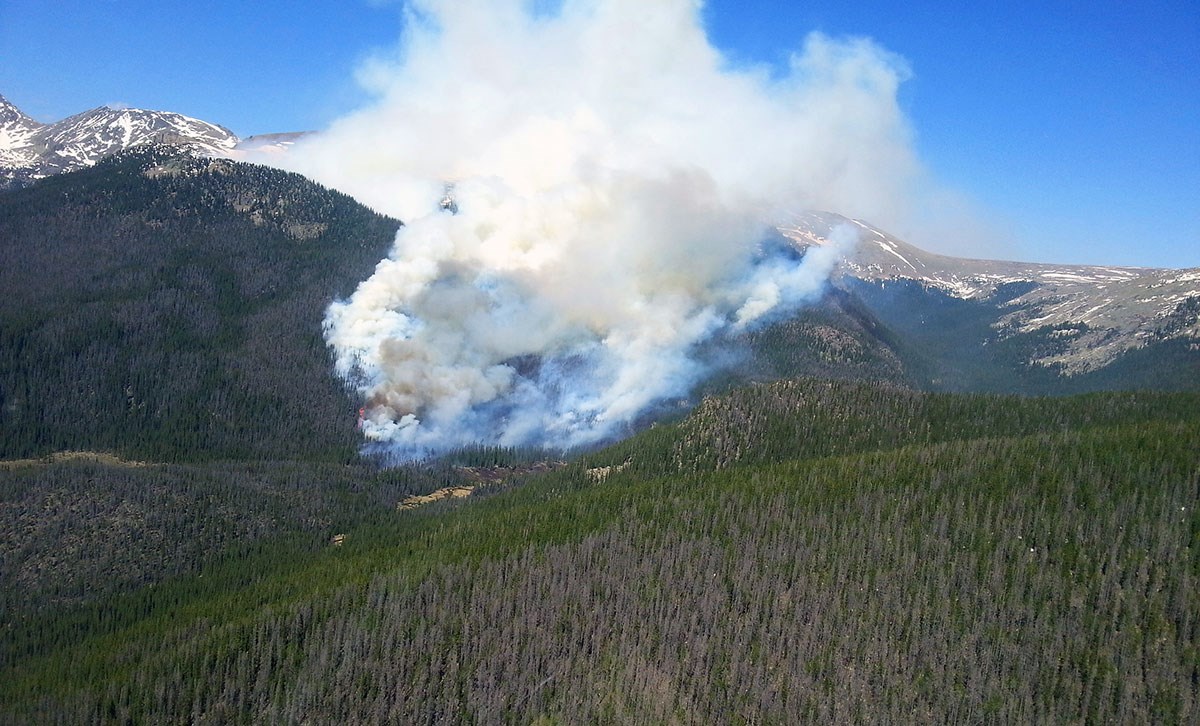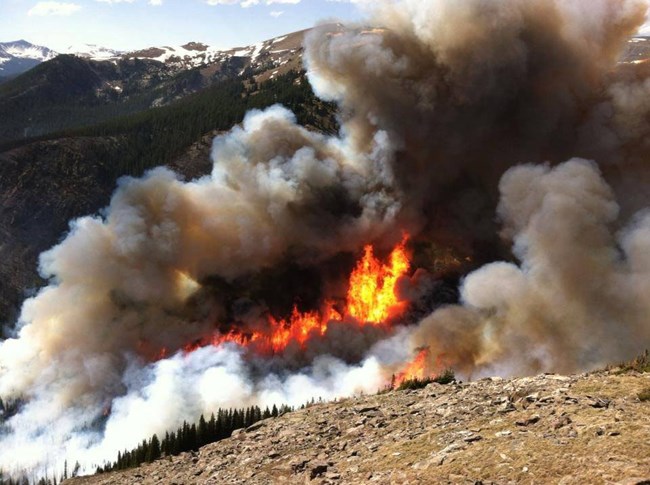Last updated: January 27, 2017
Article
Wildland Fire: Flexible Management Leads to Ecological Benefits

“The response to all our fires is based on objectives in priority order: first, to minimize risk to firefighters and the public; second, to protect communities and infrastructure, and protect natural and cultural resources; and third, to restore and maintain fire-adapted ecosystems.”—Mike Lewelling, fire manager, Rocky Mountain National Park

Lightning ignited the Big Meadows fire in Rocky Mountain National Park late in the afternoon on June 10, 2013. Burning in grass in a valley bottom, it grew to just a few acres by the following morning. However, with strong winds, high temperatures, and low humidity, the fire spread from the meadows to an area with a high percentage of beetle-killed trees, and rapidly grew to 400 acres.
Conditions surrounding the fire were less than ideal—it was early in a very dry, busy season in the Rocky Mountain geographic area with few resources available. Several other large fires ignited in Colorado that same day, including the Black Forest fire in Colorado Springs. Park management made the decision to manage the fire under protection objectives.
“The response to all our fires is based on objectives in priority order: first, to minimize risk to firefighters and the public; second, to protect communities and infrastructure, and protect natural and cultural resources; and third, to restore and maintain fire-adapted ecosystems,” Fire Manager Mike Lewelling said. “Even though this fire was managed with protection-based objectives, we leveraged our strategies and tactics in a way that maximized the ecological benefits as part of the outcome.”
To achieve that, firefighters focused efforts on developing plans that minimized risk and exposure to firefighters. Protection objectives were implemented to keep the fire from moving to the south or west, towards values at risk, while the fire was allowed to move to the north and east into tundra, effectively containing the fire while benefitting the ecosystem.
“The tactics on the west fireline, which went up a steep hill with a lot of snags, drew a lot of conversation on risk versus benefit,” Lewelling said. “There was a rock band that came down low, and really offered the only alternative to go direct. In order to do that, conversations happened between on-the-ground resources and management to establish numerous mitigation measures, including a high level of sawyer expertise, evacuation protocols, medical personnel, extra lookouts, Type 1 resources, etc. And we took our time to make sure it was done safely. If we hadn’t stopped the fire’s western movement there, the risk to firefighters would have been extended over time.”
“Both the Big Meadows fire and the late season 2012 Fern Lake fire were managed for protection objectives,” Lewelling added, “so even though ecological benefit was not an objective, we implemented management actions that provided ecological benefits as part of the outcome.”
Contact: Mike Lewelling, ROMO fire management officer
Email:e-mail us
Phone: (970) 586-1287 (office) or (970) 232-5326 (cell)
Contact: Traci Weaver, fire communication and education specialist
Email:e-mail us
Phone: (307) 739-3692 (office)
